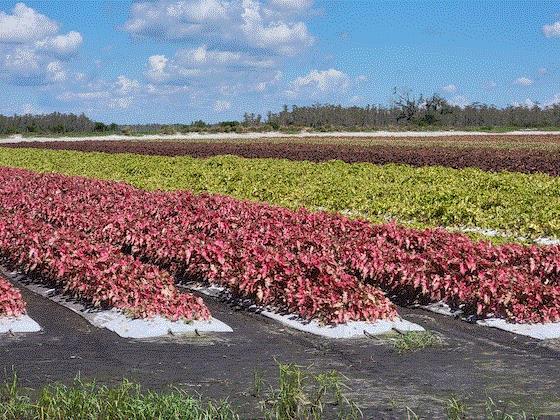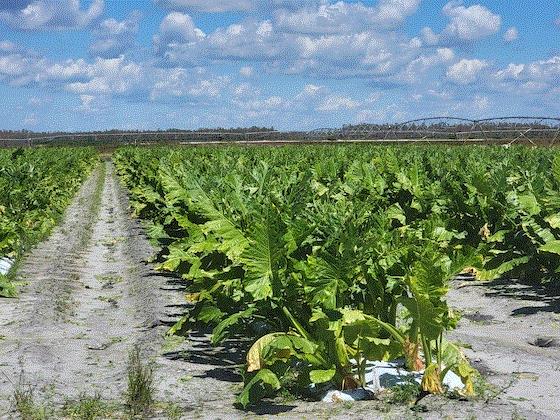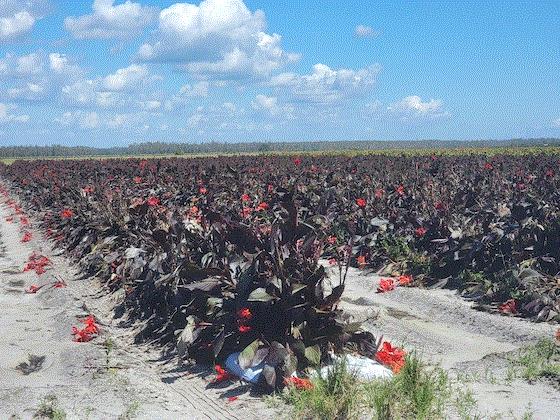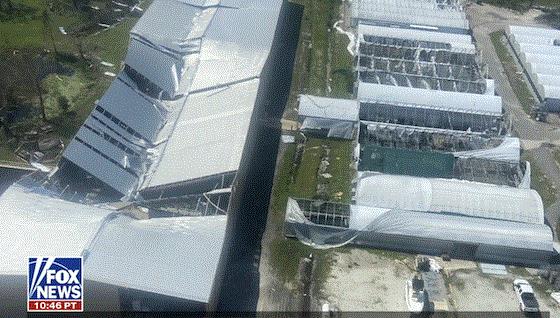Reports from Florida growers
You’ve seen what Hurricane Ian, which tied the record for the fifth-strongest hurricane to strike the U.S., did to Florida’s southwest coastline. Thankfully, there’s not a lot of horticulture over there, at least not like the southeast part of the state between Homestead and Palm Beach. But there is some, and I reached out to the growers I know over there, plus one retailer, to see how the storm affected their businesses. Here’s what they had to say:
American Farms is in Naples, just 50 miles as the crow flies from Cayo Costa, where the storm hit. Winds had to be bad, but luckily, being 10 miles inland, they didn’t suffer from storm surge like the coast. Director of Horticulture Jim Pugh returned my email to say this:
“We were extremely fortunate this time around as compared to the damage incurred by Irma in ’17. Unfortunately, the coastal areas north of us (Fort Myers and northward) took a direct hit and, in many areas, are virtually non-existent, particularly Fort Myers Beach. The wind was definitely problematic, but it was the associated storm surge that caused the most significant coastal damage.
“As for American Farms, we were dealt a glancing blow, resulting in mostly cosmetic damage to structures and crops. We did not suffer the massive structural damage that Irma inflicted. Except for the loss of a number of poly roofs and some shade cloth the farm is in pretty decent shape.”
About 80 miles north of Fort Myers and just 4 miles inland from Tampa Bay is Riverview Flower Farm, where Rick Brown plies his trade selling “Florida Friendly Plants.” Rick, no doubt extremely busy with the cleanup, shot me this quick note from his phone:
“What a mess. Lost 50 poly roofs, lots of walls, doors and curtains but very few plants. Power restored to farms by Sunday. Feeling extremely fortunate after hearing about so much death and destruction.”

Over in caladium country
About 75 miles northwest and well inland from Fort Myers is Lake Placid, the caladium capital of the world. The area was right in the path of the storm, which by then had “subsided” to a Category 3 hurricane. I reached out to two of my caladium-growing friends, Terri Cantwell of Bates Sons & Daughters and Bob Hartman of Classic Caladiums. Terri is in Lake Placid, and Bob is about 30 minutes north in Avon Park. Here’s Terri’s reply:
“Sorry for the late response—we just got power Sunday and yesterday was nuts. We are all okay and our homes are okay. We lost the poly on four of the five greenhouses and have some minor structural issues. Not an unexpected result of a Cat 3 hit.
“The caladium crops are a different story. We had a historical drought and extreme heat stress all summer so the crops already had problems. The rain was manageable—we got the straight-line winds with very little rain. There is quite a bit of wind damage. I will not know the extent of damage from both events until the harvest. Suffice it to say, it will not be a bumper crop.
“The towns to the west and north of us have much more damage. We feel grateful and extremely blessed. At the end of the day, it’s going to be a challenging season and we have been there. It’s just money. We have been very lucky. Thanks for checking in.”
Bob Hartman offered a similar take on the wind situation, which was especially hard on his other tuber crops, elephant ears and canna lilies.
“We and Lake Placid were mostly spared. We did not receive the huge amounts of rain that we anticipated, so were spared water damage. Wind damage is another issue. Short varieties had little to no damage; however, taller varieties do have wind damage. As you know, September and October are important tuber-sizing months for caladiums. With the leaves on taller varieties shredded, the question is, will the plant put energy into replacing leaves rather than into tuber storage, resulting in a drop in the average tuber size?"

Caladiums at Classic. They look fine ... but will their tubers be okay? Bob Hartman thinks so.
“Ian came late in the season and we actually had a cold front follow, with lows forecasted this week in the 50s, so we are hoping the dormancy process will begin, with carbohydrates being transported to the developing tubers. We had an awesome crop going into this, so overall we think we’ll be fine. I’m attaching a couple of post-Ian photographs I took yesterday.


“As with the taller caladiums, our elephant ear and canna crops took a lot of wind damage, but again, having occurred late in the season, we think we should have a decent harvest.”

A retailer reports in
Kerby’s Nursery & Landscaping is in Seffner, just east of Tampa. I emailed owner (with his wife, Kim) Joey Bokor to see how their 12-acre retail establishment fared.
“We did okay through Ian. Lots of prep to get ready, especially when we thought we were in for a direct hit. We did lose power, water, phone and internet at the nursery for four days. No other major damage. A little greenhouse plastic to fix, and lots of limbs and debris to clean up.
“The pictures from south of us are tough to stomach knowing it could have been our area if the storm hadn’t made an unforeseen turn. We are finally back with full services today [Monday, October 3] and hoping customers will get back in the mood for fall in Florida.”
Aris Horticulture Hurricane Ian update
Barberton, Ohio-based Aris Horticulture has two Fort Myers nursery locations, on behalf of which the company sent out this communique to customers and the industry:
“Aris Horticulture, Inc.’s Fort Myers, Florida, farms were impacted by Hurricane Ian. Aris employees are reporting in, confirming their safety and returning to work. Both the Alva and Live Oak farms have incurred some facility damage, primarily to the poly roof coverings for greenhouses and field saran. There is no major structural damage. Coolers, buildings and equipment received are operating via emergency power generators until Florida Power & Light restores power.
“The container and liner crops are being attended to, with shipments resuming next week. Power and water are being targeted to critical areas. While it has been just a couple of days, maintenance and operations crews are working hard to restore operations and shipments. Aris Keepsake Plants will continue to accept orders.
“A comprehensive assessment of the damage to the facilities and a long-term facility recovery plan are being developed. Plans will ensure that, through a combination of repairs to existing facilities and some rebuilding, both farms will have ample appropriate production area for upcoming production needs and will continue to provide a reliable supply for our customers.”

Sun Bulb/Better-Gro on Fox News
At least one of our own made the tv news, representing businesses in general and agricultural businesses specifically. Rod Hollingsworth, third-generation co-owner of Sun Bulbs/Better-Gro, was on Fox News with America Reports anchor John Roberts on October 3. Based in Arcadia, just 43 miles northeast of Cayo Costa, the company sells orchids, bromeliads and tropical plants, pottery, Dynamite Plant Food and gardening supplies. HERE is the video of his appearance.
“In the 66 years that the company has been around, have you ever seen anything like this?” John asked.
“No,” replied Rod. “This was worse than Hurricane Charlie, which was in 2004. And it was a much bigger storm. And from a flooding perspective, I’m not sure that anything has gotten close to what we’ve seen in the last couple of days.”

Better-Gro lost 90% of their crop in Hurricane Charlie. This time, Rod estimates anywhere from $5 to $10 million in damage across their two locations, possibly caused by tornadoes near the eye of the storm, he says.
John asked about insurance coverage, and Rod replied that their fertilizer and pot inventory is covered. Crops are covered by federal catastrophic insurance. Greenhouse structures, however, are not insurable.
Despite the damage, Rod said they hoped to begin shipping “something” next week.

Assistance from FNGLA
As the country’s largest state horticulture association (really, it’s an international association, with members from all over the world), the Florida Nursery, Growers and Landscape Association is well positioned to aid its members after a disaster like Ian. Since Hurricane Andrew in 1992, Florida has been hit by eight hurricanes, with Ian making No. 9, so I guess you could say they have lots of practice and are like the Boy Scouts—always prepared.
The first way the organization can help is through the FNGLA Disaster Relief Fund, which can be accessed HERE. It was established by the FNGLA Board of Directors in 2019 to give the association the capability to rapidly purchase needed goods and supplies to ship to designated drop-off sites in hardest-hit FNGLA member areas. Click the link above if you’d like to contribute.
Second is a Needs Document, available HERE. It’s a Google Docs spreadsheet listing specific needs by place, company, even individual. And just as importantly, it lists items and services companies and individuals are willing to offer. For instance, Eric Casey, Harry Love and Roxane Teymoourtash are offering generators, Alec Santiago is volunteering his own labor, and Samantha Smith (a student) is offering labor, water, food, pet food and personal care supplies. Talk about practical—and generous! That’s the kind of industry we work in.

Bridge Loan program makes $50 million available
On Tuesday, October 4, Florida governor Ron DeSantis authorized the Florida Small Business Emergency Bridge Loan Program, making $50 million available for businesses in 22 counties affected by the storm. At least $10 million of those funds must go to small businesses that are agricultural producers.
Small businesses in the most impacted counties—Charlotte, Collier, Lee and Sarasota—will be escalated and prioritized as they are received.

The program, administered by the Florida Department of Economic Opportunity, provides short-term, zero-interest loans to small businesses that have experienced economic injury or physical damage due to Hurricane Ian. Interested applicants can apply now through December 2 or until all available funds are expended. Here’s the link:
https://deosera.force.com/RebuildFloridaBusinessLoanFund/s/
The four kinds of hurricane damage
For decades, my long-time Florida friend Lynn Griffith, a tropical plant and soil expert based in Boca Raton, has been helping growers throughout the south, the tropics and around the world grow better plants. Knowing this, I asked Lynn if he had any comments and advice for growers about dealing with storm damage. He graciously—and quickly—offered the following information and tips. (Watch for an expanded version in an upcoming GrowerTalks.)
I was born and raised in New Orleans and have lived in South Florida for 50 years, so I have seen my share of hurricanes, going back to the 1950s. I have also done hundreds of damage assessments of various types of crop losses in nurseries, and am recognized as an expert in this field by the federal government.
With hurricanes such as we just saw with Ian (155 mph sustained winds and up to two feet of rain), there are four types of damage that nurseries can encounter. One, very simply, is structural damage. Offices, greenhouses and packing houses can be damaged by high winds and/or flooding. Office furniture, computers, files and so on can be damaged or destroyed.
The next three types of damage are plant-related.
The first of these is what I call a hard loss, where crops are immediately killed or ruined. Field-grown and container trees can be broken in half. Container crops can be blown or washed away. Sometimes only certain plants may be destroyed, while other times an entire greenhouse or field is ruined.
The next type of damage involves recovery time. The plants weren’t killed, but they were damaged enough that they basically need to be grown out again. The other day, I saw palm trees that were alive after the hurricane, but all of their foliage was shredded by the wind. We have to grow entire new heads on these palms in order to make them marketable. That could take 18 months. The recovery time and thus the value of the loss needs to be calculated.
Then, we have the wait-and-see or convalescent type of damage. Crops are injured, but it takes some time to determine what percentage of them will live or die or ever be marketable. I saw in-ground pine trees recently that were blown over. They can be pushed back up to vertical again, but whether they survive being blown over and then push up again remains to be seen. Flooded crops may or may not survive inundation or the diseases that may come later. However, growers do have an obligation to do everything possible to help their plants recover from storm damage.

What you can do—before AND after
There are things you can do for your crops both before and after a storm, says Lynn:
Many container tree growers lay their trees down in anticipation of a storm. It’s best to lay them down in a direction opposite of where hurricane winds are anticipated. Some nurseries pack their most valuable items in tractor-trailers. This can offer protection, but with Ian I’ve seen a number of trailers on their sides, and one that was completely upside down, wheels up.
Diseases such as Phytophthora can spread rapidly in floodwaters. The spores of Phytophthora can actually swim. Spraying flooded crops after the storm with Aliette or Fosphite can help protect crops from Pythium and Phytophthora damage. You don’t want to drench flooded crops with fungicides, at least until the media has dried out. Copper sprays may also help.
Salt intrusion from storm surge can cause major damage. One nursery client of mine was under 8 feet of seawater. After Katrina, another client of mine had oak trees under 20 feet of seawater for eight hours. We saved them. There are ways to effectively get salt out of soil.
One way is to leach with irrigation water, assuming you have power and your irrigation system is functional. Unfortunately, many times you have neither. Electrical power can be out for weeks. Check the salinity of your irrigation source, as it may be compromised, sometimes even well inland.
In field situations, broadcasting gypsum (calcium sulfate) at 1 to 2 tons per acre (50 to 100 lbs. per thousand sq. ft.) can help remove salt from soil. The calcium pushes the sodium off the soil binding site, then the sodium leaches out as sodium sulfate. Gypsum can also be applied to containers and then watered in. There is even a soluble source of gypsum, which can be applied as a drench or via fertigation.
Growers from Texas to eastern Canada can be hit by hurricanes. And while our grower friends in Denver and Chicago don’t have to worry about hurricanes, there are other types of weather disasters that can affect them, such as floods. No matter where your business is, the aftermath of the storm involves recovery efforts, but you also have to thoroughly document your losses and their value in order to qualify for financial assistance. Pretty much every nursery will have to deal with damaging weather events sooner or later, so be as prepared as you can be now.
Thanks, Lynn! If you’ve got questions for him, let me know at beytes@growertalks.com and I’ll pass them along.

Finally …
Thanks to everyone above who shared their story or expertise. Witnessing your resilience and positive attitude, and hearing how the industry always rallies to each other’s aid in times of crisis, whether it’s a local business fire or a widespread disaster, always makes me proud to be part of horticulture.
If you’ve got a Hurricane Ian story, or want to help out, let me know at beytes@growertalks.com.
Feel free to email me at beytes@growertalks.com if you have ideas, comments or questions.
See you next time!

Chris Beytes
Editor
GrowerTalks and Green Profit
This e-mail received by 25,811 loyal readers!
Thanks to my loyal sponsors, who help me reach the 25,811 readers of Acres Online in more than 60 countries. Want to be one of them (a sponsor, that is)? Give Kim Brown a shout and she will tell you about our many advertising opportunities.